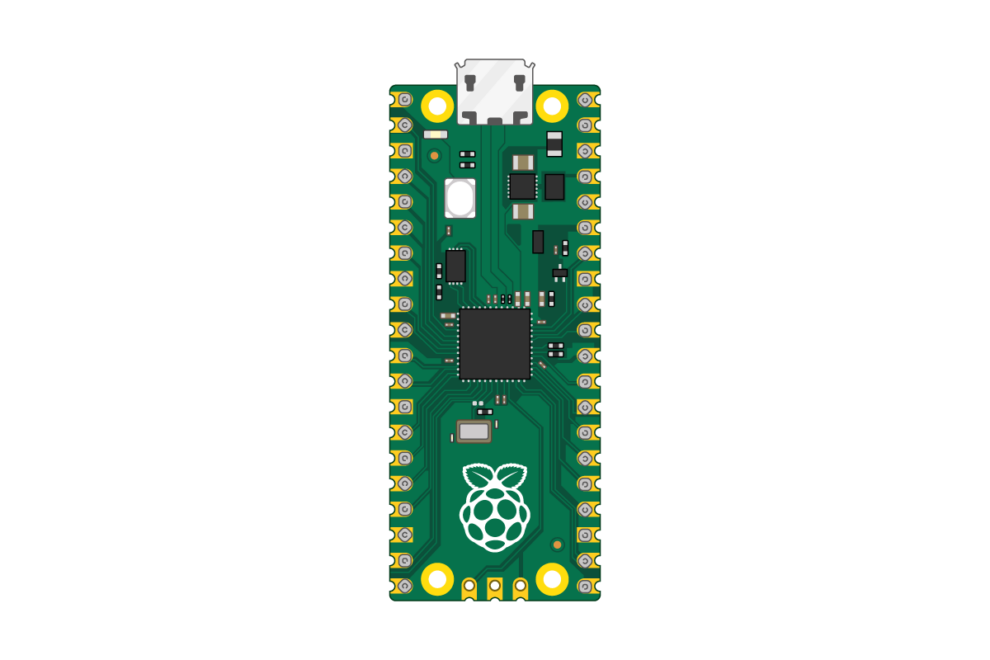The Raspberry Pi Pico, a small yet powerful development board, has taken the DIY and hobbyist world by storm with its versatile capabilities. Among its many features, capacitive touch sensing allows users to interact with their projects in intuitive ways. The Pico Touch 2 emerges as a pivotal accessory in this realm, making capacitive touch implementation simpler and more accessible.
Key Highlights:
- Designed to streamline the process of integrating capacitive touch sensing into Raspberry Pi Pico projects.
- Adds 1M ohm resistors to 23 GPIO pins, facilitating easy touch sensing setup.
- Features limited labels on top for ease of use and duplicates certain pins in its new version.
- Unique in the market, specifically tailored for the Raspberry Pi Pico.
- Priced at $10.95, aiming to be an affordable solution for hobbyists and developers alike.
Understanding the Raspberry Pi Pico
At the heart of many innovative projects, the Raspberry Pi Pico boasts a dual-core Arm Cortex-M0+ processor, 264kB on-chip SRAM, and 2MB flash memory. It supports 26 multifunctional GPIO pins, which are crucial for a wide range of embedded applications. The board’s architecture, complemented by the C/C++ SDK provided by Raspberry Pi, opens up endless possibilities for project development, including the integration of capacitive touch sensing capabilities.
Capacitive Touch Sensing: Unleashing Creative Potential
Capacitive touch sensing is a technology that detects the electrical charge in a human body, allowing objects with capacitive properties to act as inputs for electronic projects. This technology has been utilized in various innovative ways, from turning everyday objects like fruits and utensils into interactive devices to controlling games and applications. Capacitive touch sensors can be configured in several forms, such as momentary, toggle, and multi-pad sensors, each offering different interaction modes for projects.
Simplified Project Development
One of the key benefits of the Pico Touch 2 is its ability to simplify the hardware setup required for capacitive touch sensing. Traditionally, setting up capacitive touch involves intricate wiring and precise resistor placements, which can be daunting for beginners and even experienced enthusiasts. The Pico Touch 2 eliminates these hurdles by pre-integrating 1M ohm resistors, making it a plug-and-play solution for adding touch functionality to projects. This simplicity accelerates the development process, allowing makers to focus on the creative and functional aspects of their projects rather than getting stuck on the technical details.
Educational Applications
The Pico Touch 2 also serves as an excellent educational tool. In classrooms or workshops, it can be used to teach the principles of capacitive touch sensing, electrical conductivity, and human-computer interaction. By allowing students to experiment with different materials and configurations, it provides a hands-on learning experience that can enhance understanding of electronics and programming concepts. Educators can leverage the Pico Touch 2 to create engaging and interactive lessons that inspire curiosity and innovation among students.
The Role of Pico Touch 2 in Enhancing Projects
The Pico Touch 2 board is not just a piece of hardware; it’s a bridge that simplifies the integration of touch sensing into projects. By eliminating the need for manually adding resistors to GPIO pins, it allows hobbyists and developers to focus more on the creative aspects of their projects. Its compatibility with the Raspberry Pi Pico ensures that users can leverage the full potential of this development board without getting bogged down by the technical complexities of capacitive touch sensing.
The Pico Touch 2 stands out as a testament to the innovative spirit that drives the maker community. Its design acknowledges the hurdles hobbyists face and offers a straightforward solution that encourages experimentation and creativity. By making capacitive touch sensing more accessible, it opens up new avenues for interactive projects, allowing users to explore the boundaries of what’s possible with the Raspberry Pi Pico. Whether it’s for educational purposes, DIY projects, or professional prototypes, the Pico Touch 2 is a valuable tool that enhances the capabilities of the Raspberry Pi Pico, making it an indispensable asset for anyone looking to delve into the world of capacitive touch sensing.



















